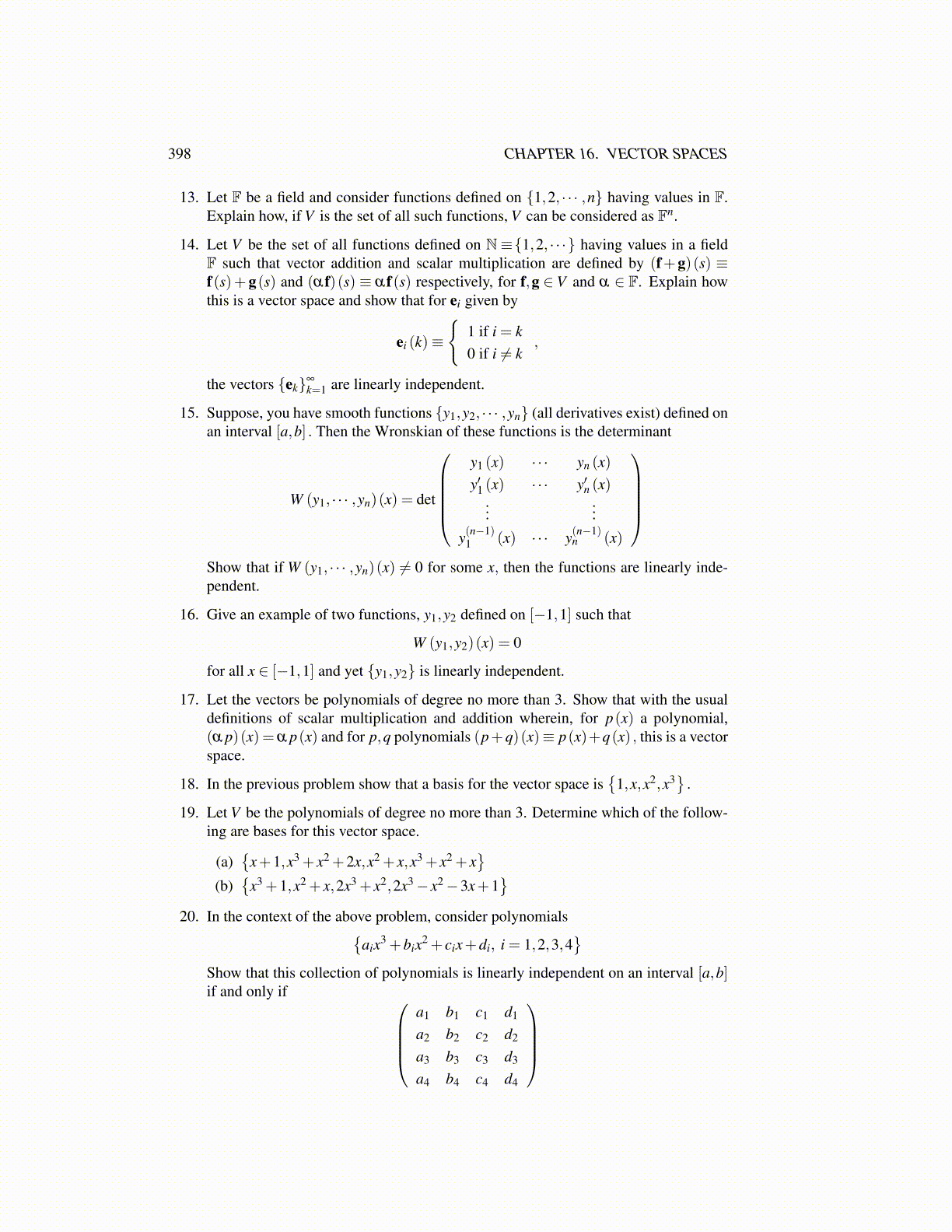
398 CHAPTER 16. VECTOR SPACES
13. Let F be a field and consider functions defined on {1,2, · · · ,n} having values in F.Explain how, if V is the set of all such functions, V can be considered as Fn.
14. Let V be the set of all functions defined on N≡{1,2, · · ·} having values in a fieldF such that vector addition and scalar multiplication are defined by (f+g)(s) ≡f(s)+ g(s) and (αf)(s) ≡ αf(s) respectively, for f,g ∈ V and α ∈ F. Explain howthis is a vector space and show that for ei given by
ei (k)≡
{1 if i = k0 if i ̸= k
,
the vectors {ek}∞
k=1 are linearly independent.
15. Suppose, you have smooth functions {y1,y2, · · · ,yn} (all derivatives exist) defined onan interval [a,b] . Then the Wronskian of these functions is the determinant
W (y1, · · · ,yn)(x) = det
y1 (x) · · · yn (x)y′1 (x) · · · y′n (x)
......
y(n−1)1 (x) · · · y(n−1)
n (x)
Show that if W (y1, · · · ,yn)(x) ̸= 0 for some x, then the functions are linearly inde-pendent.
16. Give an example of two functions, y1,y2 defined on [−1,1] such that
W (y1,y2)(x) = 0
for all x ∈ [−1,1] and yet {y1,y2} is linearly independent.
17. Let the vectors be polynomials of degree no more than 3. Show that with the usualdefinitions of scalar multiplication and addition wherein, for p(x) a polynomial,(α p)(x) =α p(x) and for p,q polynomials (p+q)(x)≡ p(x)+q(x) , this is a vectorspace.
18. In the previous problem show that a basis for the vector space is{
1,x,x2,x3}.
19. Let V be the polynomials of degree no more than 3. Determine which of the follow-ing are bases for this vector space.
(a){
x+1,x3 + x2 +2x,x2 + x,x3 + x2 + x}
(b){
x3 +1,x2 + x,2x3 + x2,2x3− x2−3x+1}
20. In the context of the above problem, consider polynomials{aix3 +bix2 + cix+di, i = 1,2,3,4
}Show that this collection of polynomials is linearly independent on an interval [a,b]if and only if
a1 b1 c1 d1
a2 b2 c2 d2
a3 b3 c3 d3
a4 b4 c4 d4